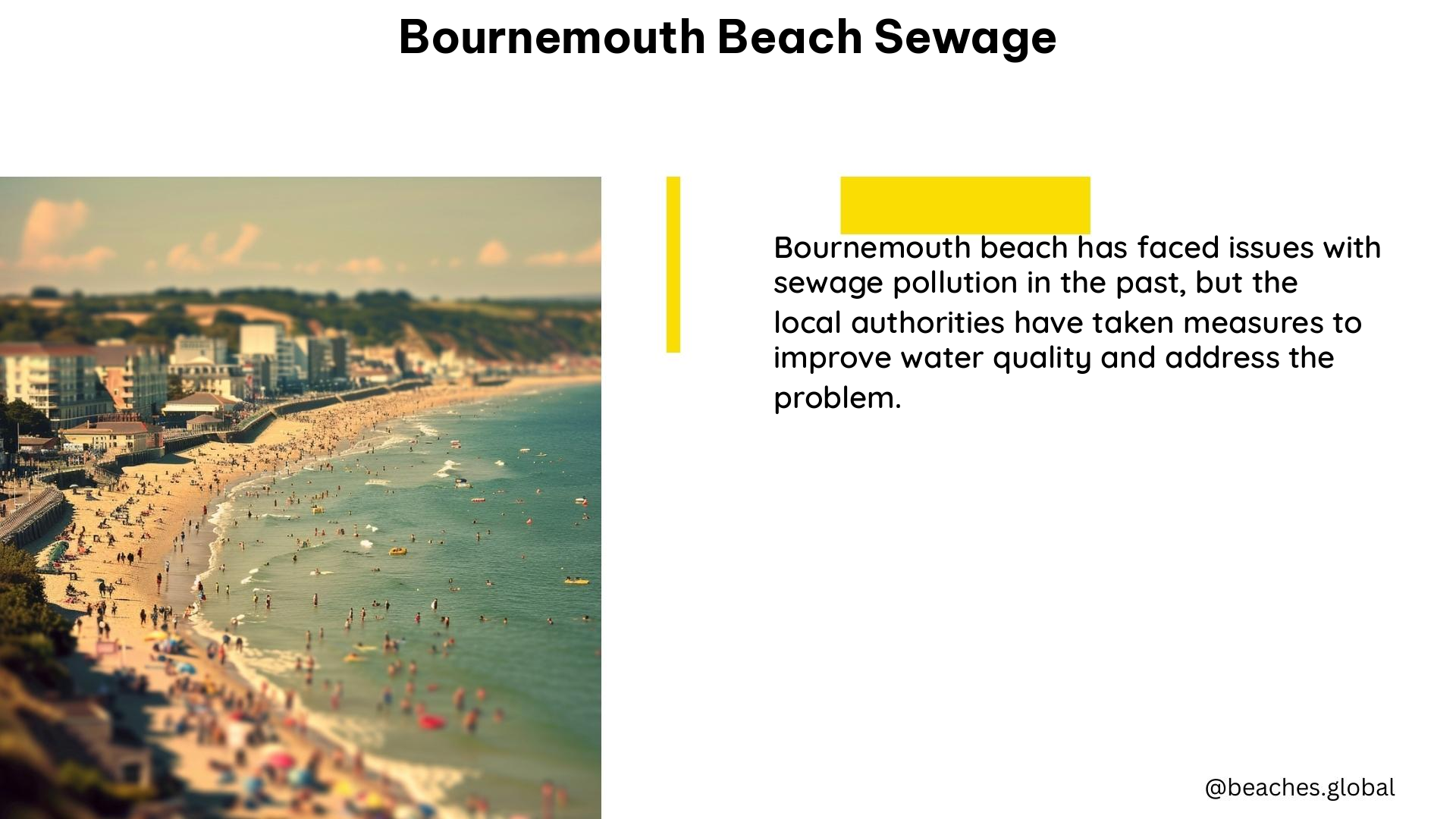Bournemouth Beach, a popular seaside destination in the UK, has been facing a growing concern over sewage spills, which have more than doubled in 2023. These spills can lead to the presence of viruses and diseases, posing significant health risks for beachgoers. To help you stay informed and safe, this blog post will delve into the details of the Bournemouth Beach sewage situation, providing you with the necessary information to make informed decisions about your beach visits.
Understanding the Bournemouth Beach Sewage Situation
The number of sewage spills in Bournemouth, Christchurch, and Poole’s waterways has more than doubled in 2023, according to recent reports. These spills can occur after heavy rainfall, leading to combined sewage overflows (CSOs) at various locations, including Bournemouth Pier and Christchurch Avon Beach.
Sewage Spills and Health Risks
Sewage spills can introduce a range of viruses and diseases into the water, posing serious health risks for beachgoers. Exposure to contaminated water can lead to a variety of illnesses, including gastrointestinal issues, skin infections, and even more severe conditions. It is crucial to be aware of the potential dangers and take appropriate precautions.
Real-time Tracking and Pollution Forecasts
To help swimmers and beachgoers stay informed, Surfers Against Sewage (SAS) has developed an interactive map that tracks real-time CSOs and pollution risk forecasts (PFRs) at over 450 locations around the UK’s rivers and coastlines, including Bournemouth Beach. This valuable resource allows you to check the water quality and potential contamination levels before engaging in water-related activities.
Navigating Bournemouth Beach Safely

Given the ongoing sewage issues, it is crucial to take proactive steps to ensure your safety and enjoyment at Bournemouth Beach.
Checking Water Quality and Safety Advisories
Before visiting Bournemouth Beach, be sure to check the Surfers Against Sewage website and utilize their interactive map to stay informed about the latest water quality data and any safety advisories. This information can help you make informed decisions about when and where to swim or engage in other water-related activities.
Avoiding Contaminated Areas
If the interactive map or other sources indicate the presence of sewage spills or high pollution levels, it is best to avoid those areas and seek alternative locations for your beach activities. Respecting the safety advisories and avoiding contaminated waters can significantly reduce your risk of exposure to harmful pathogens.
Reporting Concerns and Advocating for Change
If you encounter any issues or concerns related to sewage spills or water quality at Bournemouth Beach, consider reporting them to the relevant authorities or organizations, such as the local council or environmental agencies. Your voice can help raise awareness and drive the necessary actions to address the underlying problems and improve the overall water quality and safety for all beachgoers.
Conclusion
The sewage spills at Bournemouth Beach are a concerning issue that requires attention and action. By staying informed, being proactive in checking water quality, and reporting any issues, you can help ensure your own safety and contribute to the ongoing efforts to address this problem. Remember, your health and well-being should be the top priority when enjoying the beautiful Bournemouth Beach.
References:
– Avoid Swimming at 16 Beaches Following Sewage Discharge
– Sewage Spills in Bournemouth More Than Doubled in 2023
– Surfers Against Sewage Interactive Map
– Not to Swim at 14 Dorset Beaches Due to Sewage Alerts
– Sewage Alerts in Bournemouth, Christchurch, and Poole
